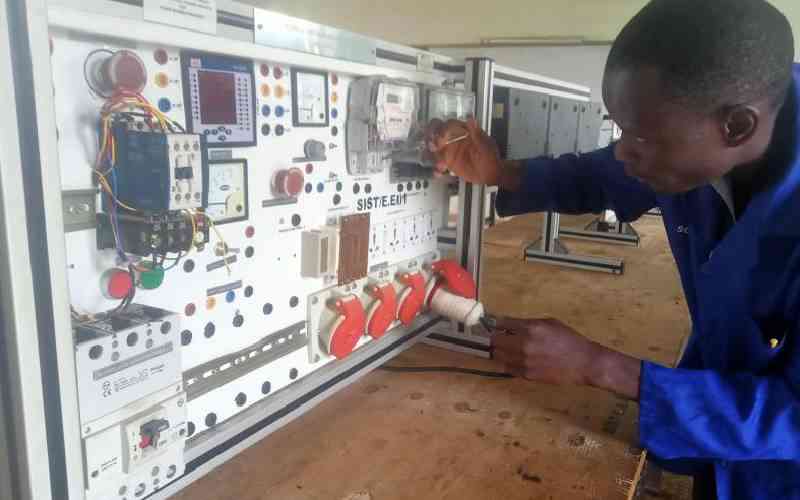Officials of an Ethiopian aviation agency have begun sifting through debris at the crash site in search of clues as to what brought down the Boeing 737, killing 157 people.
The Ethiopian Civil Aviation Authority (ECAA) is already at the site and will be joined by foreign experts.
The manufacturer of the aircraft also announced it will send a technical team to assist in investigating the cause of the crash.
“A Boeing technical team is prepared to provide technical assistance under the direction of the US National Transportation Safety Board (NTBS),” said the US aerospace giant Boeing
NTBS, through a spokesperson, announced it will send four people to assist with investigations.
The US Federal Aviation Administration (FAA) is also monitoring developments concerning the crash, a statement from the agency said.
Indonesian plane
“We are in contact with the State Department and plan to join NTSB as it works with Ethiopian civil aviation authorities to investigate the crash,” Reuters quoted an FAA statement saying.
The Boeing 737 MAX 8 aircraft is new to the airspace after it was launched in 2016. Reports also indicate that the ill-fated craft had only operated for four months after it was delivered to Ethiopian Airlines in November last year.
The crash comes barely four months after the same model – Lion Air Boeing 737 jet – plunged into Java sea moments after taking off from Jakarta airport, Indonesia, in October last year.
Aviation analyst Alex Macheras yesterday said in an interview with Al Jazeera that the 737 MAX is the updated version of the Boeing 737.
“The MAX is in service all around the world. Airlines such as the Ethiopian Airlines are using this aircraft, as it is the latest, the most fuel-efficient, short-range Boeing aircraft in the market,” said Mr Macheras.
Struggled with system
“The aircraft that crashed today is less than four months old. It was delivered to Ethiopia in mid-November, when it flew from the US, made a fuel stop in Ireland, and was delivered to Addis Ababa.”
The plane-spotters civil aviation database shows that the plane was delivered to Ethiopian Airlines in mid-November.
Stay informed. Subscribe to our newsletter
A report by investigators into Lion Air Boeing indicated that the pilots had struggled with the plane’s anti-stall system, as they attempted to return to the airport.
It further said the pilots had appeared to struggle with an automated system designed to keep the plane from stalling — a new feature of the Boeing 737 Max.
Investigators have previously said the ill-fated aircraft had problems with its airspeed indicator and angle of attack sensors, prompting Boeing to issue a special bulletin telling operators what to do when they face a similar situation.
Ethiopian Airlines has a reputation for safety and charges relatively low fares, making it popular.
 The Standard Group Plc is a
multi-media organization with investments in media platforms spanning newspaper
print operations, television, radio broadcasting, digital and online services. The
Standard Group is recognized as a leading multi-media house in Kenya with a key
influence in matters of national and international interest.
The Standard Group Plc is a
multi-media organization with investments in media platforms spanning newspaper
print operations, television, radio broadcasting, digital and online services. The
Standard Group is recognized as a leading multi-media house in Kenya with a key
influence in matters of national and international interest.
 The Standard Group Plc is a
multi-media organization with investments in media platforms spanning newspaper
print operations, television, radio broadcasting, digital and online services. The
Standard Group is recognized as a leading multi-media house in Kenya with a key
influence in matters of national and international interest.
The Standard Group Plc is a
multi-media organization with investments in media platforms spanning newspaper
print operations, television, radio broadcasting, digital and online services. The
Standard Group is recognized as a leading multi-media house in Kenya with a key
influence in matters of national and international interest.








